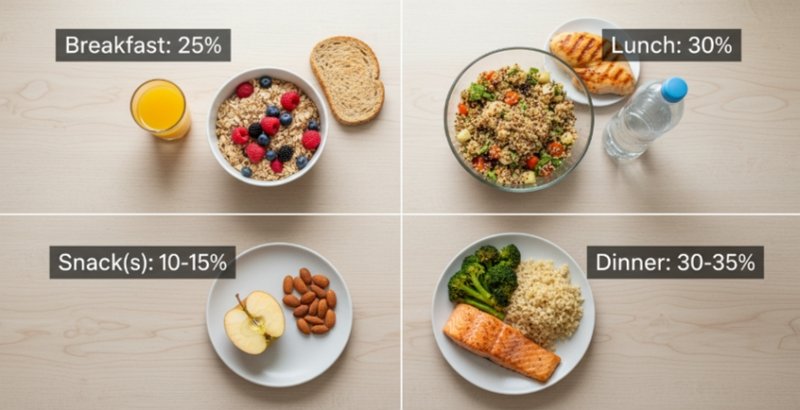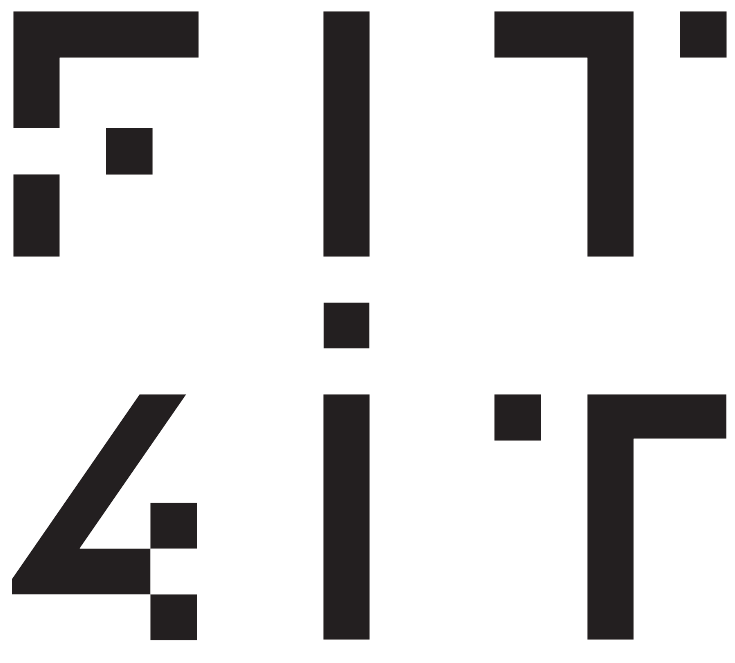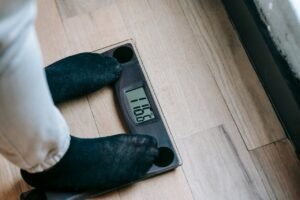Weight loss isn’t all about skipping food, as it demands clarity. Many people eat randomly or try things that are not suitable for their body composition.
In comparison, calculating calories to eat for weight loss gives a rather clear direction. You need a base metabolic rate, an activity level, and realistic goals to finally achieve your desired body weight.
This article shows how to calculate the necessary calories and establish a safe deficit to achieve consistent weight loss until the desired goals are reached. We will recommend evidence-based tools to ensure your weight loss is effective and sustainable.
Calculate Basal Rate
Basal metabolic rate (BMR) is the number of calories your body needs at rest for basic body functions. Your BMR depends entirely on your weight, height, age, and sex. Calculators like the Mifflin-St. Jeor equation computes BMR first and then multiplies it by activity levels to get total daily energy expenditure (TDEE).
That TDEE is the baseline for maintaining weight. Hence, you eat fewer calories than TDEE to lose weight. This should be your first step before actually starting to lose weight, as it helps avoid bigger deficits. Here is how you can use this formula:
- Get your weight in kilograms and height in centimeters.
- For men: (10×weight) + (6.25×height) − (5×age) + 5.
- For women: Subtract 161 instead.
- Multiply BMR by activity factor (1.2 to 1.9, depending on how active you are).
The final result will be your maintenance calories. All you need to do now is eat fewer calories than those required for maintenance until your weight drops.
The Mifflin-St. Jeor equation is considered more accurate than the original Harris-Benedict formula for predicting BMR in modern populations.
Creating A Deficit
As explained above, weight loss happens when you consume fewer calories than you burn. That gap is called a calorie deficit. Typical safe deficits are about 300 to 500 calories per day. With this much deficit, you can lose up to 1 pound of weight every week.
While larger deficits speed up the weight loss process, they come with the risk of muscle loss and nutrient deficiencies. Many guidelines warn not to go below 1,200 calories per day for women or 1,500 for men without medical supervision.

A 200-300 calorie deficit is ideal for weight loss
Here are a few tips you can follow:
- Start with around 500 calories less than maintenance.
- If weight or fat loss stalls after 2 to 3 weeks, reduce by another 100 to 200 calories.
- Never drop below safe minimums without professional guidance.
- Prioritize protein and nutrient-dense foods to preserve muscle.
An important point here is that even with a consistent calorie-deficient diet, you may not lose weight. This occurs due to your insulin levels, and our guide on blood level insulin and fat loss explains this in detail.
Deficits exceeding 1,000 calories per day significantly increase the risk of micronutrient deficiency and lean muscle mass loss.
Average Daily Needs
Here are sample ranges for how many calories adults often need. Please note your overall body composition. Use this as a reference before customizing it according to your goals.
| Sex | Age Range | Sedentary Activity | Moderately Active | Active |
|---|---|---|---|---|
| Female | 21 to 25 | 2,000 kcal/day | 2,200 kcal/day | 2,400 kcal/day |
| Female | 31 to 50 | 1,800 kcal/day | 2,000 kcal/day | 2,200 kcal/day |
| Male | 21 to 30 | 2,400 kcal/day | 2,800 kcal/day | 3,000 kcal/day |
| Male | 40 to 55 | 2,200 kcal/day | 2,600 kcal/day | 2,800 kcal/day |
Meal Level Breakdown
Simply knowing how many calories you need to eat for weight loss will not be enough. You must also know how to divide them and sequence your meals to get the maximum benefit. A balance of macronutrients, such as proteins, carbs, and fats, in your diet matters a lot.

Meal-level breakdown of calories
That’s because protein helps preserve muscle, while carbs give energy, and fats support hormones. Apart from macros, you must also understand micronutrients, as they are also important to ensure a healthy body and optimal weight. Additionally, go through the following breakdown to understand how you can divide calories in your daily diet:
- Breakfast: 25%
- Lunch: 30%
- Snack(s): 10 to 15%
- Dinner: 30 to 35%
Protein has the highest thermic effect of food (TEF), meaning it requires the most calories (about 20 to 30% of its own) to digest and process.
Tracking And Adjustments
Finally, once the plan is in place, you must also start tracking your progress. Without tracking, you’ll misjudge portion sizes, cheat without realizing, or drift from the pre-decided deficit. For that instance, you must track food intake, weigh in weekly, and measure your waist if possible.
With the information you gather through this tracking, adjust if weight loss is too rapid. For example, more than 2 pounds per week is a bit too fast and can cause issues. You will also need to adjust if it is too slow, which is less than 0.5 pounds per week, after a few weeks. Apart from these things, cues like how you feel, your energy levels, sleep patterns and recovery, and hunger will also help you adjust.
| Metric | Ideal Progress | When To Adjust |
|---|---|---|
| Weekly weight loss | 1 to 2 lbs | Reduce calories or increase activity if no loss after 2 weeks |
| Energy levels & recovery | Good energy and manageable soreness | Scale back if there is fatigue and constant soreness |
| Hunger & satiety | Controlled hunger | Excess hunger means you must improve nutrient density |
| Strength / performance | Maintain or improve | Declining strength means you must ensure adequate protein |
Common Mistakes
As simple as it may sound, you still need to take into account a lot of things while devising a weight loss plan. That is why it is recommended to take help from professional nutritionists, like those we have at FIT4IT, who provide a calorie-deficient plan that works for your body’s composition.

A certified nutritionist can help with the weight loss process
- If you proceed on your own, here are a few mistakes you must avoid:
- Underestimating how many calories you burn (TDEE) or misjudging activity levels.
- Cutting calories drastically causes muscle loss and metabolic slowdown.
- Ignoring protein needs while focusing purely on calorie count.
- Skipping meals or going long durations without food.
- Forgetting non-food energy use, like NEAT (non-exercise activity thermogenesis).
Conclusion
All you need to do is find your maintenance calories and eat 300 to 500 calories less than that to lose weight. However, help from a professional nutritionist is recommended to ensure your diet plan remains effective and your body receives enough nutrients. For that, FIT4IT provides both online and offline consultations with their certified nutritionists.
Was this helpful?
Good job! Please give your positive feedback
How could we improve this post? Please Help us.






No Comments